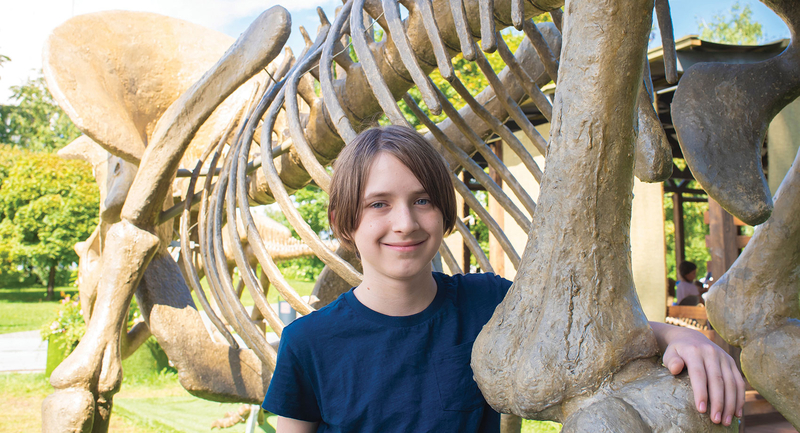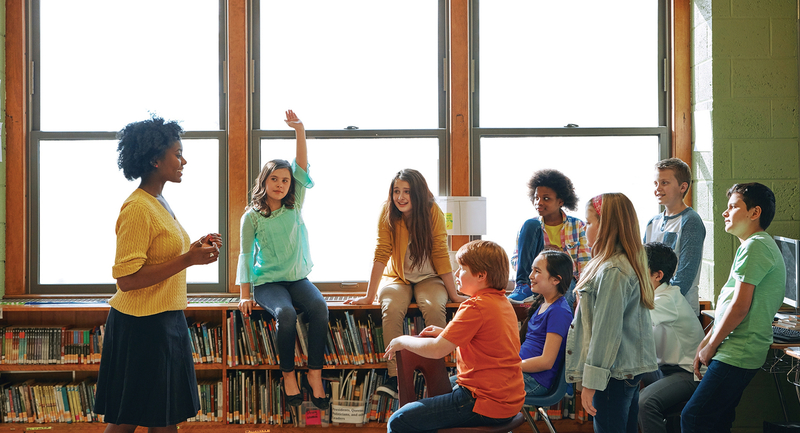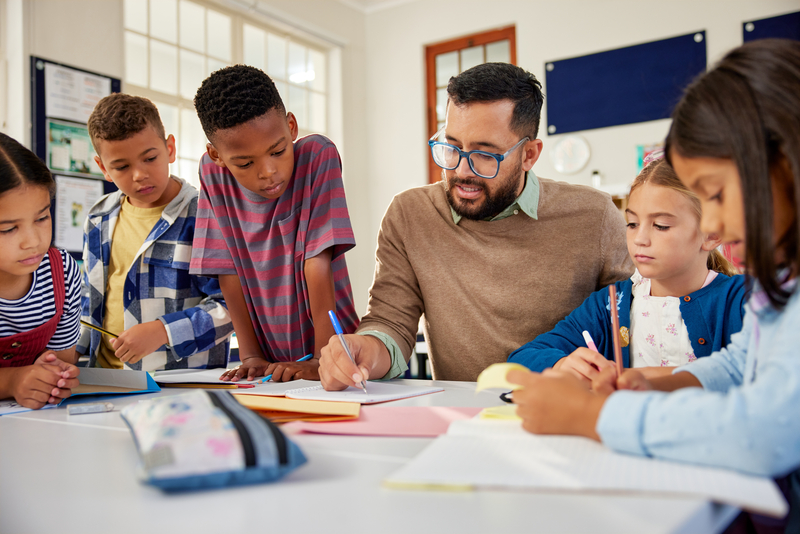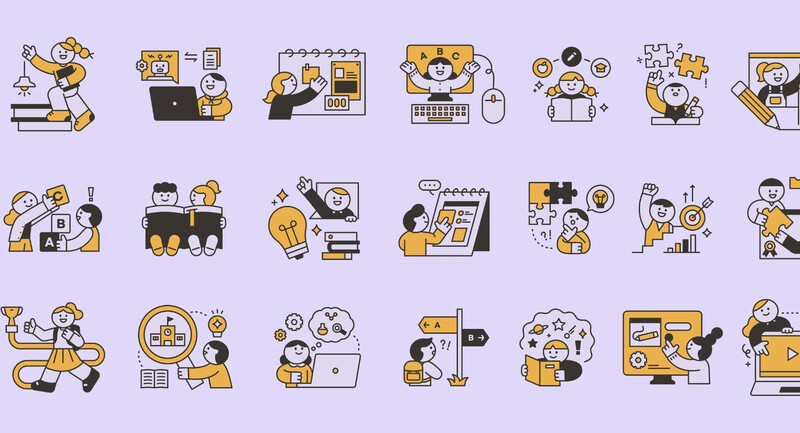Amazing recent research about the brain’s capacity, intellectual development, and potential for learning has positive implications for educators’ ability to accelerate every child’s achievement. In fact, as educators, we live in a time of great possibility. We now know that all brains, regardless of the ethnicity or culture of the body they inhabit, are endowed with the gift of neuroplasticity—the ability to change over the course of one’s life through the continual growth of new neurons (neurogenesis). Here’s the truth of this new knowledge: All students’ intelligence is dynamic and modifiable, capable of vast and accelerated growth.
So why aren’t many students reaping the benefits of this incredible finding in terms of their learning? We must especially question why “Generation Alpha” students are underachieving so dramatically.
Generation Alpha is defined as those born between 2010–2024, often the children of Generation Y (Millennials). They are the first generation to be born entirely within the 21st century and, according to demographic researcher Mark McCrindle (n.d.), will be the most racially, ethnically diverse and materially endowed generation ever. More than 2.8 million “Generation Alpha babies are born globally every week. By 2025, this generation will number almost 2 billion—the largest generation in the history of the world” (McCrindle, n.d.).
Data show there’s been a sizable drop in academic achievement for Generation Alpha students. According to research, Gen Alpha students were among those (in grades 3–8) that lost the equivalent of a half-year of math and a quarter-year of reading due to the pandemic (Martinez, 2023). Many commentators in education have labeled this drop a “learning loss,” and it has had a greater negative impact on low-income and Black and Hispanic students (Dorn et al., 2020). Various interrelated factors explain this underachievement of Alpha students. But research implies that—as for all other generations—the most significant factor on learning and achievement is student disengagement (Hattie, 2023). Even before the pandemic, students were showing signs of disengagement; then came virtual instruction, which exacerbated the issue (Fredericks, 2023). Students’ engagement is activated when there are explicit connections to their cultural frames of reference—to what is important, relevant, and meaningful to them, including their strengths and interests. A connection from their cultural touchstones to academic experiences fortifies any student’s confidence by building bridges for understanding and a sense of competence. Most educators know this, but when we ask them to describe their Generation Alpha students’ cultural frames of reference or what engages them, only a small percentage are able to provide a meaningful response. Gen Alpha’s realities aren’t on our radar yet.
As educational researchers, we believe the K–12 education system’s lack of investment in learning realities about this generation partially explains why the system has responded to the “learning loss” by reversing back to the Bell Curve ideology and prescribing—to boost these youths’ achievement—remedial, unengaging instruction, such as worksheet-driven classwork (Fredericks, 2023). Such instruction is the antithesis of what is needed to stimulate engagement (Jackson, 2011). The result of kids of this age being taught this way is increased stress, anxiety, and disengagement (Fredericks, 2023). Many agree these three factors contribute to the current high rates of absenteeism.
Good News About Alphas
To engage Alphas, it’s good to consider this generation’s general learning preferences. In 2010, when the first Gen Alpha babies arrived, Instagram, Siri, Alexa, and the iPad also came on the market. According to McCrindle’s research, by age 2, many of the more advantaged members of this generation had begun learning to master Siri, iPads, and other interactive technologies. Screens served as pacifiers, entertainers, and educational aids.
Gen Alpha has a proclivity and preference for technology use.
So Gen Alpha has a proclivity and preference for technology use. Even before they became teenagers, most were constantly connected and hyper-informed. They taught themselves new information, skills, and ways of learning through TikTok and YouTube videos. Video games motivated them to be solution-seekers, while platforms that enabled them to create and program games inspired them to be innovators rather than passive consumers (Formaran, 2024; McCrindle, n.d.). Technology use has brought these young people cognitive strengths. They use technology to scour the world for information, which they efficiently filter to address their interests and needs. Many absorb vast knowledge and organize it into networks of abstract mental schema, and this schema enables them to construct and focus deeply on meaning. Tech-enabled researching, synthesizing, and acting on new learning has led Gen Alphas to be acutely aware of and affected by what’s happening in the world. This cultivates both emotional intelligence, which impacts their decision-making, and the higher-order thinking processes they use to identify connections and perceive relationships—all the requisites to intellectual processing, understanding, and learning at high levels (Jackson, 2011).
Research also confirms that apathy, disengagement, and underachievement can be transformed when teachers stop “dumbing down” teaching and instead employ what Carol Ann Tomlinson (2012) calls “teaching up.” In our view, teaching up is best reflected in the type of pedagogy offered in “gifted” education (enriching instruction that should be available to all students). Gifted education demonstrates belief in students by inviting them to explore the “frontier of their intelligence” (ECCBN, 2016) through an enriching, challenging curriculum that elicits the application of their strengths, frames of reference, and higher-order thinking skills. Such gifted education is the basis of what we call the Pedagogy of Confidence. This is an equity-driven approach to learning and teaching based on the expectation that all students are capable of high intellectual performances when teachers use seven practices—what we term the High Operational Practices™, or HOPs—that motivate self-directed learning and self-actualization (see sidebar).
How One District Learned to Teach Up
Redwood City School District in California’s Silicon Valley serves preschool through 8th grade students. This district of 6,400 students represents 35 different languages, with 32 percent of the student body categorized as English learners. Fifty-five percent of Redwood City’s students are socioeconomically disadvantaged. Even before the pandemic and lockdown disrupted learning, significant numbers of Redwood City students, particularly English learners and other students from historically marginalized groups, were struggling academically. The spring 2017 California Assessment of Student Performance and Progress (CASPP) data indicated that the performance of the cohort of all English learners was 104.7 points below standard for English language arts, whereas native English-speaking students scored 39.9 points below standard. Similar differences in achievement existed between other cohorts of Redwood City students, with students from groups that historically have had fewer advantages scoring lower in general. This was the reality facing the recently appointed superintendent, John Baker—and his impetus for changing the deficit narrative he inherited to an equity-conscious narrative of belief.
Baker and his teachers knew they needed new ways to reach these Gen Alpha children. In 2018, Baker engaged the National Urban Alliance for Effective Education (NUA), where coauthor Yvette Jackson serves as senior scholar, to provide professional development in the Pedagogy of Confidence over five years, starting with administrators.
In 2019, the work expanded to include teachers in three elementary schools. School leaders and teachers attended full-day, large-group seminars. During the pandemic, NUA mentors continued their work through virtual “visits” to individual schools to demonstrate effective teaching methods and how Redwood City’s teachers might start using the HOPs.
A look at one school—Clifford Elementary—shows how the new PD changed Redwood City’s situation. Clifford serves approximately 675 students in preschool through 8th grade. Fifty percent of the students are Latinx, 35 percent are socioeconomically disadvantaged, and 25 percent are English learners. Clifford’s teachers were determined to interrupt the impact of inequities on their students’ learning and increase engagement. The fact that instruction was happening through screens, delivered to kids at home, played a role in the actions these educators took. Having “front-row seats” into their students’ homes, teachers came face to face with each student’s lived experience. Certain inequities became impossible to ignore. Whereas some students had adult supervision at home during the pandemic, other students were asked to supervise their younger siblings. Some kids had intermittent access to the internet, and others were unable to find quiet spaces to participate in online lessons.
When content is bridged to the cultural experiences of students, their attention and motivation increase.
As PD related to the Pedagogy of Confidence progressed, a group of Clifford teachers from grades 3 through 5, wishing to rejuvenate the closeness of their collegial relationships, teamed up for weekly planning sessions to co-design lessons to better engage their learners’ attention. These teachers, taking what they learned in the PD to heart, were determined to bridge their lessons to their students’ frames of reference—how what is relevant and meaningful to them affects how they experience and perceive the world (Jackson, 2011). When content is bridged to the cultural experiences of students, the new PD emphasized, their attention and motivation increase. This, in turn, activates students’ innate brain power for applying higher order cognitive skills, making learning more memorable as well as interesting.
This team relied on a set of whole-child-oriented design principles developed by The Learning Policy Institute and Turnaround for Children (2021). These principles are meant to guide the transformation of learning settings toward higher expectations and cultural connections. They are based on the collective research from the Science of Learning and Development Alliance and align with the Pedagogy of Confidence’s High Operational Practices (see fig. 1).
Clifford teachers also drew on the concept of a “community of belonging” (Othering and Belonging Institute, 2016)—a process that prompts students to use varied cognitive skills as they search for and build on each other’s responses. They established such a community within and across their three grades, facilitating relationship building among the students and showing these Generation Alpha youth that their teachers believe in their intellectual capacity.
Addressing the tenets of a community of belonging and using the HOPs, this team integrated strategies into their pedagogy that acknowledged the value of students’ strengths and interests and motivated collaboration by helping students use their diverse strengths and knowledge in group work (while honoring individual identities). They cultivated agency and investment through structured protocols that facilitated students’ higher order thinking and accelerated learning, both independently and collaboratively. These protocols connected to and built upon the funds of knowledge and strengths students possessed—and were acquiring. Let’s look at three protocols in depth.
1. Learning About Learning. Intent on mediating a growth mindset in their Generation Alpha students and engaging their students’ desire to learn why things operate, the Clifford team used research from the Science of Learning and Development Alliance to teach students how the brain learns and intelligence develops. This understanding made students aware of the vast capacity of their brains for high levels of learning and intellectual performance. Teachers modeled the metacognition processes involved in learning, making transparent how priming, processing, and demonstrating understanding are phases of learning they used in teaching—and that students could use for learning. Students learned the purpose of these three processes and how to use them independently—and how to develop their power of self-efficacy. The phases of learning were referred to throughout each school day as part of the language the teacher and students used to talk about learning. Together, students and teachers became active participants in the learning process, developing their confidence as learners or facilitators of learning.
2. Thinking Maps. Thinking Maps are visual-verbal organizers that describe and support the brain’s natural cognitive processes (Hyerle, 2011). All eight maps elicit the use of cognitive terminology and provide vehicles to help students describe their thinking, building their verbal repertoire of cognitive skills. Teachers at Clifford used Thinking Maps to make students’ thinking visible and to provide a common language for students to communicate, with precision, about how they were thinking. During one lesson, a student stated, “Instead of having to keep everything that I am thinking in my head, I can write it down. You can keep them [thoughts] all organized. Once you have it down on a map, you know where everything else goes. When I write things down on a map it helps me remember them.”
3. Mediated Dialogue. Generation Alpha thrives on authentic dialogue for genuine engagement—and bonding. The Clifford team incorporated the Mediated Dialogue protocol (Jackson, 2011)—one in which students use varied cognitive skills as they attend to and build on each other’s responses—as the cornerstone of relationship building and learning in their classroom community. This protocol promotes listening, focusing, and language development. Dialogues were facilitated through teacher-led cycles and student-facilitated cycles; students had explicit training in thinking skills within a curriculum enriched with relevant content sourced from the internet. They could develop schema for understanding concepts and processes for reflection and giving feedback. Students used Thinking Maps and other cognitive strategies to analyze content and identify relevant connections and applications to their personal experiences and connections to knowledge acquired through independent learning. As students facilitated dialogue cycles, they started to identify, build on, and affirm each other’s contributions and strengths. Students learned to self-mediate and make decisions for their own learning.
Raising Achievement—Without Focusing on “Learning Loss”
Recent data show that as teachers at Clifford (and throughout Redwood City) have deliberately built relationships between peers, teachers, and the content, their students have become deeply engaged and are able to articulate the why and how of their learning. And achievement has risen. Assessment data for the several years after Clifford’s teachers adopted this approach, for example, indicate that (on standardized tests for English language arts skills) Clifford’s 3rd, 4th, and 5th graders outperformed their peers in comparable schools that had not exposed students to the Pedagogy of Confidence.
Clifford teachers reframed their understanding of their students, moving from the deficit thinking of “learning loss” to an assets-based Pedagogy of Confidence for “teaching up” to understand the characteristics, strengths, and needs of their Gen Alpha students. They have become teacher leaders in the district, working alongside a districtwide equity coach to model their pedagogy rooted in a belief in all students’ abilities. District teachers have deepened their understanding of teaching from using isolated instructional strategies to a cohesive, intentional approach that integrates social-emotional learning with rigorous content instruction. Students in the classes of participating teachers increasingly combine reflection, complex thinking, and affective skills, demonstrating the potential to become the leaders we need our Generation Alpha youth to be.









